graphics card
Latest
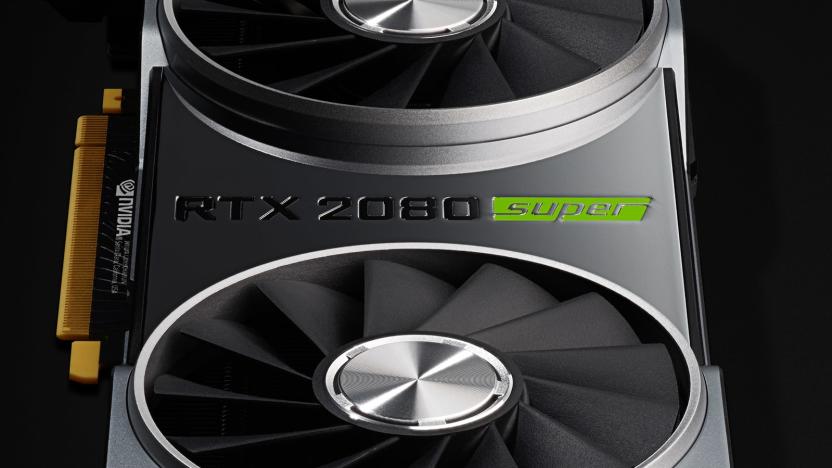
NVIDIA's latest GPU drivers pack a speed boost for 'Apex Legends'
It's common for graphics card drivers to provide optimizations for games, but the improvements aren't often this conspicuous. NVIDIA has released a Gamescom Game Ready Driver that offers significant speedups for multiple games, most notably Apex Legends. If you're using one of the company's GeForce RTX Super cards, you can expect performance jumps between 15 to 23 percent at 1080p resolution -- that could make all the difference in such a frame rate-sensitive shooter. You'll also see a roughly 13 to 17 percent gain in Forza Horizon 4 at 1440p as well as milder improvements for Battlefield V, Strange Brigade and World War Z.

NVIDIA 'Super' GPU leaks hint at not-so-super speed boosts
There might not be much mystery left to NVIDIA's "Super" launch. VideoCardz claims to have detailed specs and release details for the company's GeForce RTX Super lineup, and they appear to be what you'd expect: souped-up versions of existing RTX chipsets to compete with AMD's Radeon RX 5000 series. The first ones out of the gate would be the RTX 2060 Super and RTX 2070 Super, both of which would have more cores than their 'standard' equivalents without shaking up the basic formula. They'd be roughly 15 to 16 percent faster than their predecessors.
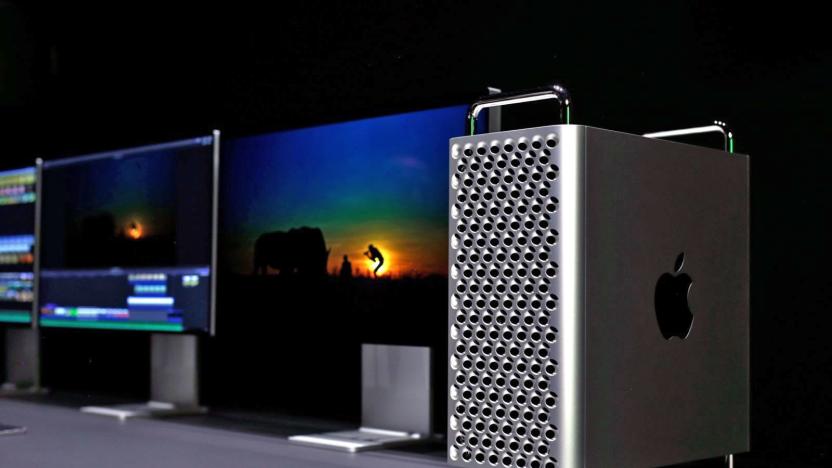
Apple's revamped Mac Pro uses new Radeon Pro Vega II GPUs
Apple's revamped Mac Pro isn't just a showcase for the company's industrial design chops -- it also marks the introduction of new AMD graphics technology. The new system will use the Radeon Pro Vega II, a GPU that's built on the 7-nanometer architecture of the Radeon VII (sorry, no Navi yet) with a workstation focus. The base processing power isn't that much different with up to 14 TFLOPS of single-precision computing power, but the memory is another matter. The Pro Vega II touts a whopping 32GB of high-bandwidth HBM2 RAM to handle demanding tasks like 8K video editing or running two 6K displays.
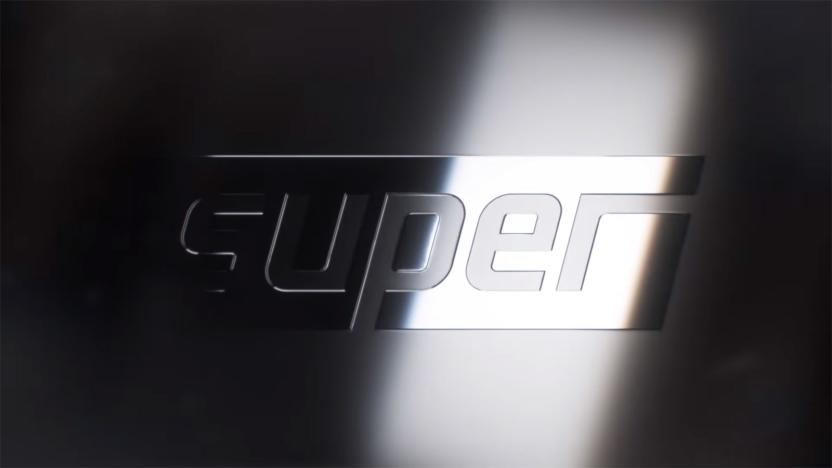
NVIDIA teases something 'super'
NVIDIA's Computex press event will likely represent big news for PC gamers. The GPU maker has posted a teaser on its GeForce YouTube channel hinting that "something super is coming." The brief clip only shows an embossed metal "super" logo, but that's enough to suggest that it could represent one or more souped-up graphics cards. If so, there might already be an inkling of what to expect.
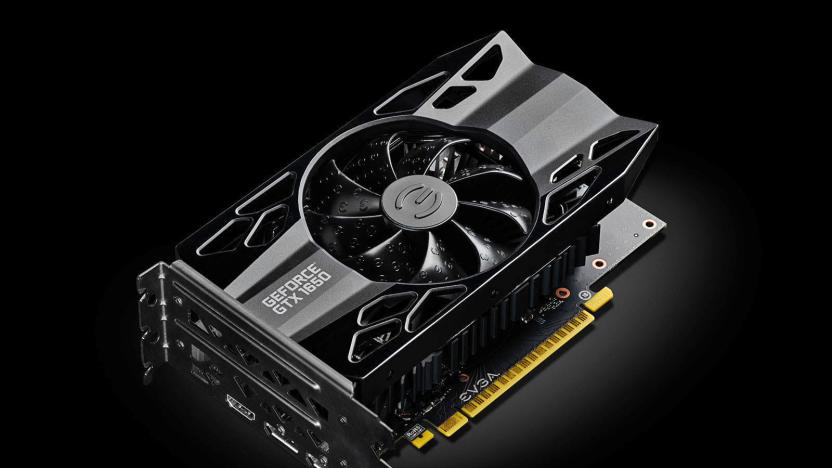
NVIDIA's GTX 1650 GPU delivers modern gaming for $149
NVIDIA's cutting-edge Turing architecture has been gradually making way to more affordable graphics cards, and now it's finally reaching the entry level. The company has introduce the GeForce GTX 1650, a starter GPU that aims to provide the perks of modern games (such as complex shader effects) at an easier-to-swallow starting price of $149. It's a significant step down from the GTX 1660, but NVIDIA is betting that you won't mind in light of improvements over predecessors.
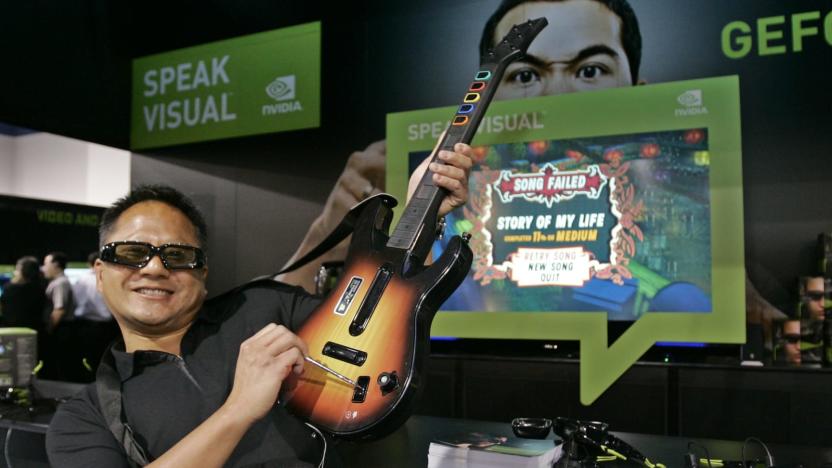
NVIDIA will stop supporting 3D glasses in April (updated)
Have you noticed that stereoscopic 3D is out of vogue, at least at home? So has NVIDIA. The graphics chip designer has unveiled plans to drop support for 3D Vision, its approach to gaming with 3D glasses. The last drivers to support 3D Vision will come with the final Release 418 in April, with future versions dropping it entirely. You'll still get support for "critical driver issues" in 418 through April 2020, but you'll otherwise need to move on.

AMD Radeon VII review: Is 4K gaming enough?
When AMD announced it was developing new GPUs for data centers in mid-2018, it was clear they weren't intended for gaming. AMD was in a tough spot: NVIDIA was gearing up to release its RTX cards with ray-tracing and AI-powered tech that AMD couldn't compete with. The feeling was that AMD had decided to cede the high-end to NVIDIA and focus on the mid-range (where most sales are). A new high-end gaming card wasn't expected for another year at least. These data-center cards, the Instinct MI60 and MI50, took AMD's previous flagship gaming chip (named Vega 10) and shrunk the transistors from 14nm to a 7nm process. A small manufacturing process makes smaller transistors that can run faster or use less power for the same speed. When the Instinct cards were announced in November, they were a refined version of last years' gaming cards, with enterprise features like error correction and support for super-high-precision math. Take those features away from an Instinct MI50 and you have something that looks very similar to the Radeon VII.

NVIDIA's GTX 980 Ti has enough power for solid 4K gaming
Who needs a $650 video card? Pretty much anyone who wants to play games in 4K at decent frame rates. That's the basic pitch for NVIDIA's new $650 GTX 980 Ti, its latest high-end video card, which, naturally, packs in even more power than last year's GTX 980. The new card sports 2,816 parallel processing CUDA cores and 176 texture units, around 38 percent more than the GTX 980, as well as two additional gigabytes of RAM giving it 6GB. It's also based on NVIDIA's new GM200 GPU, which is at the heart of the company's absurdly expensive $1,000 Titan X card. Basically, that means in the instances where its former heavyweight card slows down in 4K -- for example, by running Grand Theft Auto V -- the 980 Ti should shine. NVIDIA says the new card gets around 60 FPS in GTA V, while many benchmarks of that game with the 980 see between 35 and 45 FPS. The 980 Ti is also good news for anyone waiting for a good deal on the 980, since NVIDIA is also dropping the retail price of that card from $550 to $500.

NVIDIA announces GeForce GTX 770 for under $400, says it's faster than last year's GTX 680
It probably won't come as a huge surprise, given the GTX 780's appearance last week, but today's launch of the GTX 770 nevertheless brings us a very interesting product. The card is claimed to be about five percent faster than last year's much more expensive flagship, the GTX 680, thanks to faster memory (7Gb/s instead of 6Gb/s), a slightly higher base clock speed (1,046 vs. 1,006MHz) and an equivalent number of CUDA cores (1,536). Seeing as how the the GTX 680 still holds its own with current games, this performance parity strikes us as something of a deal -- assuming independent benchmarks back it up. We're awaiting a confirmed US price, but we'll eat our SATA cables if it's anything other than $399 for a 2GB model (the press release just says "under $400"). UK and European prices match those of the GTX 670 (£329 inc. VAT, 329 euros exc. VAT), and availability begins today. Check out NVIDIA's slide deck for more details, including power consumption and noise, SLI scaling (which looks healthy) and some in-house frame rate comparisons against other products. Update: $399 is confirmed. The cables are safe.%Gallery-189773%

AMD details $999 Radeon HD 7990 graphics card, says it handles all top games at 4K
We've seen plenty of the Radeon HD 7990 in action with Battlefield 4, but it's taken AMD a little while to furnish us with full specs and pricing for its in-house reference design. Now that all the info is here, in the run-up to commercial availability in two week's time, it's finally possible to judge the pros and cons of what is arguably a very niche product. Read on past the break and we'll do just that.%Gallery-186656%

Fusion-io bumps its ioFX super-SSD to 1.6TB, announces HP Workstation Z integration
We have a feeling graphics artists are going to be begging their studios for Fusion-io's latest ioFX super-SSD. After receiving critical acclaim for its 460GB version, the company has today introduced a massively-speced 1.6TB variant at NAB. Despite the space increase, the new unit is not bigger than its older sibling. In related news, HP has also signed on to integrate ioFX into its HP Z 420, 620 and 820 all-in-ones Workstations, and it'll also give current workstation owners the option to simply add the card to their existing machines. Fusion won't be releasing any details about pricing for the 1.6TB ioFX just yet -- that'll remain under wraps until its released this summer. For now, movie makers can net the 460GB one for $2K (about $500 less that its release price). Full press release after the break.

NVIDIA GTX Titan review roundup: the fastest single-GPU card ever tested
Looking to cut to the chase? Those yearning for the fastest single-GPU powered graphics card ever tested need look no further... for the moment, anyway. NVIDIA's beastly GTX Titan has been making the rounds on test benches across the world, and while demo titles and stress factors varied somewhat, the overall conclusion seems pretty unanimous. The folks at Hot Hardware proclaimed: "In every benchmark or game we threw at it, regardless of resolution, the GeForce GTX Titan clearly outpaced the Radeon HD 7970 GHz Edition and the GeForce GTX 680, sometimes by margins over 50 percent." Meanwhile, the crew at AnandTech stated: "It's simply in a league of its own right now, reaching levels of performance no other single-GPU card can touch." Oh, and it can totally play Crysis 3. For those needing any additional convincing, you'll find a plethora of links below; in other news, you still need a grand to buy one. Huzzah!

AMD Never Settle bundle gives Radeon HD 7000 buyers free games they'd actually care to play
Just about anyone who has bought more than one aftermarket graphics card knows that bundled games rarely matter. They're usually year-old titles or neutered editions built only to showcase the GPU's performance for a few hours. AMD thinks its Never Settle bundle might finally get us to notice. Buy any modern Radeon HD video card from the 7770 GHz Edition on up and you'll get a download code for at least one new game you'd genuinely want to try, ranging from Far Cry 3 on basic cards to a full three-game deal that supplies Far Cry 3, Hitman: Absolution and Sleeping Dogs to high rollers buying the 7900 series. There's likewise a discount for Medal of Honor: Warfighter and promises of bundles in 2013 for Bioshock Infinite and the reimagined Tomb Raider. As long as you're not dead set on springing for a GeForce board in the next few months, one of the qualifying cards might be worth a look to jumpstart your game collection.

NVIDIA GeForce GTX 650 and 660 review roundup: hitting the sweet spot, sometimes
If you're building or upgrading a budget gaming rig, it'll be hard to ignore the GeForce GTX 650 and 660. Whether or not NVIDIA's new chipsets are worth the glance is another matter, and early reviews suggest that a sale depends on just which market you're in. The GTX 660, by far the darling of the review crowd, competes solidly against the Radeon HD 7850 by outrunning AMD's hardware in most situations while undercutting on the official price. Only a few have taken a look at the lower-end GTX 650, but it's not as much of a clear-cut purchasing decision -- the entry-level video often slots in between the performance of the Radeon HD 7750 and 7770 without the price edge of its bigger brother. Either card is much better value for the money than the GT 640, however, and looks to be a meaningful upgrade if you're trading up from equivalent prior-generation gear. Read - AnandTech (GTX 660) Read - Benchmark Reviews (GTX 660) Read - Bit-Tech (GTX 660) Read - Guru 3D (GTX 650) Read - HardOCP (GTX 660) Read - Hot Hardware (GTX 660) Read - PC Mag (GTX 660) Read - PC Perspective (GTX 660) Read - Tom's Hardware (GTX 650 and 660)

NVIDIA Quadro K5000 GPU for Mac offers significant Premiere Pro performance boost, we go hands-on
NVIDIA just announced that its new Quadro K5000 GPU will be available on Mac Pros, offering 4K display compatibility and support for up to four displays, not to mention 4GB of graphics memory and about 2x faster performance than the Fermi-based Quadro 4000. While the Kepler-powered chip won't actually hit Apple systems till later this year, we got a first look at the K500 on a Mac here at IBC. NVIDIA demoed Adobe After Effects and Premiere Pro CS6 on a Mac Pro with dual K5000 GPUs. As you'll see in the video below, with 11 streams of 1080p video at 30 fps in Premiere Pro (and one overlay of the NVIDIA logo), GPU acceleration handles the workload seamlessly, letting us add effects in real time without any processing delay. Switching to software rendering mode in the editing program shows a night-and-day difference: video playback is extremely choppy, and processing moves at a crawl. Even with two K5000 chips in this desktop, Premiere Pro utilizes just one, but After Effects takes advantage of both GPUs. In this program, NVIDIA showed us ray-tracing, a computationally intensive 3D imaging feature, which only became available in After Effects with the release of CS6. Like in Premiere Pro, the program runs smoothly enough to let us edit images in real time. Take a look for yourself by heading past the break.

NVIDIA working on Linux support for Optimus automatic graphics switching
Linux godfather Linus Torvalds may have a frosty relationship with NVIDIA, but that hasn't stopped the company from improving its hardware's support for the open-source operating system. In fact, the chipset-maker is working on the OS' compatibility with its Optimus graphics switching tech, which would enable laptops to conserve power by swapping between discrete and integrated graphics on the fly. In an email sent to a developer listserv, NVIDIA software engineer Aaron Plattner revealed that he's created a working proof of concept with a driver. There's no word on when the Tux-loving masses may see Optimus support, but we imagine that day can't come soon enough for those who want better battery life while gaming on their mobile machines.

NVIDIA GeForce GTX 660 Ti review roundup: impressive performance for around $300
No one's saying that $300 is "cheap," but compared to the GTX 670 and GTX 680 before it, the newly announced GeForce GTX 660 Ti is definitely in a more attainable category. The usual suspects have hashed out their reviews today, with the general consensus being one of satisfaction. A gamechanger in the space it's not, but this Kepler-based GPU managed to go toe-to-toe with similarly priced Radeon GPUs while being relatively power efficient in the process. That said, AnandTech was quick to point out that unlike Kepler reviews in the past, the 660 Ti wasn't able to simply blow away the competition; it found the card to perform around 10 to 15 percent faster than the 7870 from AMD, while the 7950 was putting out roughly the same amount of performance as the card on today's test bench. HotHardware mentioned that NVIDIA does indeed have another winner on its hands, noting that it'd be tough to do better right now for three Benjamins. Per usual, there's plenty of further reading available in the links below for those seriously considering the upgrade.

NVIDIA announces $299 GeForce GTX 660 Ti, lets Kepler walk among the people
It's taken NVIDIA a mighty long time to squeeze its Kepler GPU into something more affordable than the GTX 670, but it's finally happened -- the mid-range GTX 660 Ti is out and available to purchase for $299 on boards from EVGA, Gigabyte, ASUS and the usual suspects. Some buyers may complain that's $50 more than the 560 Ti, while others will no doubt be reeling off their CVV codes already. For its part, NVIDIA claims the 660 Ti is the "best card per watt ever made" and that it beats even AMD's higher-priced Radeon HD 7950 at 1920 x 1080. Check out the slide deck below for official stats, as well as for examples of what the card can do with its support for DirectX 11 tessellation, PhysX (particularly on Borderlands 2, which you may well find bundled free) and NVIDIA's TXAA anti-aliasing. We'll wait for independent benchmarks in our review round-up before making any judgment, but in the meantime it's fair to say that this 150-watt card comes fully featured. For a start, it has just as many 28nm CUDA cores as the GTX 670, the same base and GPU Boost clock speeds, the same 2GB of GDDR5 and indeed the same connectivity. The only sacrifice is memory bandwidth: all that computational performance is limited by a 192-bit memory bus, compared to the 256-bit width of the 670. Judging from those specs, we'd expect it to be almost 670-like in performance, and that's going to be pretty impressive.%Gallery-162585%

SIGGRAPH 2012 wrap-up
Considering that SIGGRAPH focuses on visual content creation and display, there was no shortage of interesting elements to gawk at on the show floor. From motion capture demos to 3D objects printed for Hollywood productions, there was plenty of entertainment at the Los Angeles Convention Center this year. Major product introductions included ARM's Mali-T604 GPU and a handful of high-end graphics cards from AMD, but the highlight of the show was the Emerging Technologies wing, which played host to a variety of concept demonstrations, gathering top researchers from institutions like the University of Electro-Communications in Tokyo and MIT. The exhibition has come to a close for the year, but you can catch up with the show floor action in the gallery below, then click on past the break for links to all of our hands-on coverage, direct from LA.%Gallery-162185%

AMD launches its next-gen FirePro graphics card lineup, we go hands-on at SIGGRAPH (video)
Just as you've cozied up with "Tahiti" and "Cape Verde," AMD has returned to grow its "Southern Islands" family of graphics cards with four fresh FirePros, offering up to four teraflops of graphics computing power. That spec can be found in the company's new W9000, which is capable of four TFLOPs single precision and one TFLOP double precision with a price tag just shy of $4,000. That behemoth of a card offers 6GB of GDDR5 RAM and requires 274 watts of power. More humble members of the fam include the W8000, which has the same form-factor as the higher-end W9000, but eases back on the specs, consuming 189 watts of power and carrying a $1,599 price tag. We had a chance to take a closer look at both cards at SIGGRAPH, and while they packed a significant amount of heft, you'll likely never take a second look once they're buried away in your tower rig. Fans of smaller housings (and price tags) may take notice of the W7000 and W5000, which are both considerably more compact and require less power to boot, with pricing set at $899 and $599, respectively. Those cards were also on hand for our demo, and can be seen along with the top two configs in our gallery below. You can also sneak a closer peek in the hands-on video after the break, and glance at the full specs over at our news post from earlier today.%Gallery-161943%







